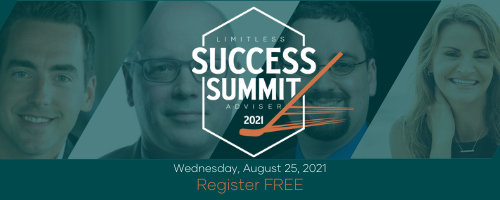A sense of righteous indignation spread over the face of the advisor who approached me after a keynote presentation on “systematizing” financial planning service. The idea went against the very foundation of financial planning, he said, an industry in which clients need individual attention, personal service and advice tailored to their situation and goals. Trying to scale that with repeatable processes, he assured me, would mean watering down what made his practice special.
I agree that the concept of standardizing and systematizing a highly specialized experience flies in the face of conventional wisdom. Financial planning, after all, is predicated on the idea of personal relationships. The idea is that the exchange between one client and one advisor cannot be scaled because it is so unique. But in my experience, scaling a personalized client experience is actually one of the best strategies advisors can use to deliver deeper value to clients, drive faster growth and stay on the winning side of a rapidly evolving profession.
My goal here is to shift your thinking about your business and service strategy and give serious consideration to the winds of change blowing through our profession—and ultimately to get you to understand the power of “scaling your special.”
Your “special” can be defined as both what you bring to clients as a unique person and what you deliver professionally in a way that makes it yours. In my 30 years in this business, I’ve discovered a hard truth about the professional offering: financial planners all offer the same basic services—discovery, analysis, recommendations, net-worth statements, balance sheets, portfolio allocations, retirement projections and withdrawal. The discovery meetings all end with you asking the prospect to entrust their net worth to you and your process.
How do you make your service stand out in this sea of sameness? You need a process that allows your particular wisdom to be deeply customized to the personal and financial needs of your clients. And you need to focus on a more specific clientele that is served by this process. The more specialized the offering, the more attractive it becomes to the subset of people for whom it is intended.
In fact, studies show that niche/specialty firms grow three to four times faster than generalist practices.
“Scaling special” starts when you define services and touch points that will be compelling to the subset of clients you seek to serve. The narrower the audience, the more focused your services can become and the easier it is to systematize services and experiences.
This approach requires deep knowledge of the client. Take Adam, a lifestyle advisor who was stuck at $225,000 in revenue and feeling exasperated. In 18 months, he narrowed his niche, doubled his revenue and took enough time off to fulfill his dream of getting his pilot’s license.
How? He decided he could do his best work with optometrists. He developed a clearly defined service model relying heavily on his customer relationship management technology. That left him free to schedule and deliver a set of tailored services particularly appealing to optometry practices. He implemented what we call “model meetings,” which cover the standard planning agenda items, but then focused his discussions with the clients on aligning their finances with their life needs and goals. Adam began delivering a highly specialized meeting experience, in a very efficient 75-minutes.
From here, he and his assistant implemented client meeting “surges”—the practice of holding client review meetings twice a year, typically during the spring and fall. All client review meetings are held during these six-to-eight-week windows, following a systematized, staff-driven process that allowed Adam to deliver deeper, more personal advice than he had before.
The surge process recaptures the time required for truly special client attention and advice. When an advisor like Adam streamlines and systematizes the standardized tasks that consume attention and staff time, his time and attention are refocused to the personal aspects of the agenda.
With these changes, Adam’s practice doubled in 15 months and in three years nearly doubled again. He is enjoying his practice more than ever. His podcast educates optometrists in a digital format, delivering information that will prompt those in need of advice to call, which forms a steady stream of qualified prospects. His CRM is littered with data on each client, integrated into every aspect of the client experience. His service menu is built on the specific needs of optometrists, with tailored service strategies, meeting models and surges to address both their personal and professional needs.
Adam is delivering on the tenets of financial planning plus a highly specialized experience that delivers deeper value and truly differentiates him in the marketplace.
Can larger firms “scale special” in the same way? In my coaching, I’ve addressed this challenge by focusing on sub-specialty service models for larger, general practices that don’t have one specific set of clients. The strategy is a strikingly simple core-plus-custom model. You have one standardized set of services and touch points common to all clients. Then you have an additional set of services for each sub-specialty within your general client base. The firm may serve retirees, doctors, independent women, executives, salespersons, creatives and educators. Each specific service model for these client segments comes on top of the core set of common services. This model is standardized and systematized, uses technology to the utmost and—voilà!—you have found a way to create a firm that is both general and specific.
This sub-specialty strategy may not produce the same level of hyper-performance that a true specialty or niche practice can. But when you’re driving scale, capturing 70% of that specialization is more than enough to drive steady growth and find increasingly satisfied clients. The next best thing is to have each advisor within your practice own a specialty, as large law firms do, so that you can not only service your clients in a specialized way, but also attract new ones easily by marketing in a tailored way as well.
Imagine being the client of a firm that has an in-depth understanding of not only your balance sheet but also your personal and professional dynamics.
Imagine you’re the firm serving this client, having in your CRM a list of your client’s upcoming milestones, together with articles, books, gifts, communications and ideas specific to the client’s planning situation, profession, preferences, interests, hobbies, causes and people that matter to them.
Next, imagine that for your next client meeting, the agenda is drafted by the technology, with the client’s personal talking points prepopulated into the agenda as well as other items of interest for you to accept, replace or decline. Here you can concentrate all your time on your clients and the advice they need, not on collecting the information for the meeting.
Whether you own a small solo firm seeking a greater level of success or a larger firm striving to drive growth without losing that special touch, the answer to staying ahead of the success curve isn’t to resist the forces we face, but to welcome the opportunity these changes ultimately create.
As seen in:





